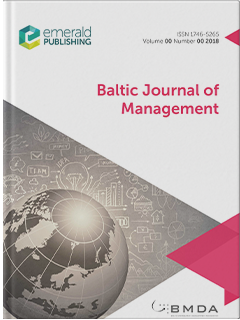
Management Decision
Before you start
Author responsibilities
Our goal is to provide you with a professional and courteous experience at each stage of the review and publication process. There are also some responsibilities that sit with you as the author. Our expectation is that you will:
- Respond swiftly to any queries during the publication process.
- Be accountable for all aspects of your work. This includes investigating and resolving any questions about accuracy or research integrity
- Treat communications between you and the journal editor as confidential until an editorial decision has been made.
- Read about our research ethics for authorship. These state that you must:
- Include anyone who has made a substantial and meaningful contribution to the submission (anyone else involved in the paper should be listed in the acknowledgements).
- Exclude anyone who hasn’t contributed to the paper, or who has chosen not to be associated with the research.
- In accordance with COPE’s position statement on AI tools, Large Language Models cannot be credited with authorship as they are incapable of conceptualising a research design without human direction and cannot be accountable for the integrity, originality, and validity of the published work. The author(s) must describe the content created or modified as well as appropriately cite the name and version of the AI tool used; any additional works drawn on by the AI tool should also be appropriately cited and referenced. Standard tools that are used to improve spelling and grammar are not included within the parameters of this guidance. The Editor and Publisher reserve the right to determine whether the use of an AI tool is permissible.
- If your article involves human participants, you must ensure you have considered whether or not you require ethical approval for your research, and include this information as part of your submission. Find out more about informed consent.
Generative AI usage key principles
Copywriting any part of an article using a generative AI tool/LLM would not be permissible, including the generation of the abstract or the literature review, for as per Emerald’s authorship criteria, the author(s) must be responsible for the work and accountable for its accuracy, integrity, and validity.
- The generation or reporting of results using a generative AI tool/LLM is not permissible, for as per Emerald’s authorship criteria, the author(s) must be responsible for the creation and interpretation of their work and accountable for its accuracy, integrity, and validity.
- The in-text reporting of statistics using a generative AI tool/LLM is not permissible due to concerns over the authenticity, integrity, and validity of the data produced, although the use of such a tool to aid in the analysis of the work would be permissible.
- Copy-editing an article using a generative AI tool/LLM in order to improve its language and readability would be permissible as this mirrors standard tools already employed to improve spelling and grammar, and uses existing author-created material, rather than generating wholly new content, while the author(s) remains responsible for the original work.
- The submission and publication of images created by AI tools or large-scale generative models is not permitted.
Research and publishing ethics
Our editors and employees work hard to ensure the content we publish is ethically sound. To help us achieve that goal, we closely follow the advice laid out in the guidelines and flowcharts on the COPE (Committee on Publication Ethics) website.
We have also developed our research and publishing ethics guidelines. If you haven’t already read these, we urge you to do so – they will help you avoid the most common publishing ethics issues.
A few key points:
- Any manuscript you submit to this journal should be original. That means it should not have been published before in its current, or similar, form. Exceptions to this rule are outlined in our pre-print and conference paper policies. If any substantial element of your paper has been previously published, you need to declare this to the journal editor upon submission. Please note, the journal editor may use Crossref Similarity Check to check on the originality of submissions received. This service compares submissions against a database of 49 million works from 800 scholarly publishers.
- Your work should not have been submitted elsewhere and should not be under consideration by any other publication.
- If you have a conflict of interest, you must declare it upon submission; this allows the editor to decide how they would like to proceed. Read about conflict of interest in our research and publishing ethics guidelines.
- By submitting your work to Emerald, you are guaranteeing that the work is not in infringement of any existing copyright.
Third party copyright permissions
Prior to article submission, you need to ensure you’ve applied for, and received, written permission to use any material in your manuscript that has been created by a third party. Please note, we are unable to publish any article that still has permissions pending. The rights we require are:
- Non-exclusive rights to reproduce the material in the article or book chapter.
- Print and electronic rights.
- Worldwide English-language rights.
- To use the material for the life of the work. That means there should be no time restrictions on its re-use e.g. a one-year licence.
We are a member of the International Association of Scientific, Technical, and Medical Publishers (STM) and participate in the STM permissions guidelines, a reciprocal free exchange of material with other STM publishers. In some cases, this may mean that you don’t need permission to re-use content. If so, please highlight this at the submission stage.
Please take a few moments to read our guide to publishing permissions to ensure you have met all the requirements, so that we can process your submission without delay.
Open access submissions and information
All our journals currently offer two open access (OA) publishing paths; gold open access and green open access.
If you would like to, or are required to, make the branded publisher PDF (also known as the version of record) freely available immediately upon publication, you can select the gold open access route once your paper is accepted.
If you’ve chosen to publish gold open access, this is the point you will be asked to pay the APC (article processing charge). This varies per journal and can be found on our APC price list or on the editorial system at the point of submission. Your article will be published with a Creative Commons CC BY 4.0 user licence, which outlines how readers can reuse your work.
Alternatively, if you would like to, or are required to, publish open access but your funding doesn’t cover the cost of the APC, you can choose the green open access, or self-archiving, route. As soon as your article is published, you can make the author accepted manuscript (the version accepted for publication) openly available, free from payment and embargo periods.
You can find out more about our open access routes, our APCs and waivers and read our FAQs on our open research page.
Transparency and Openness Promotion (TOP) guidelines
We are a signatory of the Transparency and Openness Promotion (TOP) Guidelines, a framework that supports the reproducibility of research through the adoption of transparent research practices. That means we encourage you to:
- Cite and fully reference all data, program code, and other methods in your article.
- Include persistent identifiers, such as a Digital Object Identifier (DOI), in references for datasets and program codes. Persistent identifiers ensure future access to unique published digital objects, such as a piece of text or datasets. Persistent identifiers are assigned to datasets by digital archives, such as institutional repositories and partners in the Data Preservation Alliance for the Social Sciences (Data-PASS).
- Follow appropriate international and national procedures with respect to data protection, rights to privacy and other ethical considerations, whenever you cite data. For further guidance please refer to our research and publishing ethics guidelines. For an example on how to cite datasets, please refer to the references section below.
Prepare your submission
Manuscript support services
We are pleased to partner with Editage, a platform that connects you with relevant experts in language support, translation, editing, visuals, consulting, and more. After you’ve agreed a fee, they will work with you to enhance your manuscript and get it submission-ready.
This is an optional service for authors who feel they need a little extra support. It does not guarantee your work will be accepted for review or publication.
Manuscript requirements
Before you submit your manuscript, it’s important you read and follow the guidelines below. You will also find some useful tips in our structure your journal submission how-to guide.
|
Format |
Article files should be provided in Microsoft Word format While you are welcome to submit a PDF of the document alongside the Word file, PDFs alone are not acceptable. LaTeX files can also be used but only if an accompanying PDF document is provided. Acceptable figure file types are listed further below. |
|
Article length / wordcount |
Articles should be between 5000 and 8000 words in length. This includes all text, for example, the structured abstract, references, all text in tables, and figures and appendices. Please allow 280 words for each figure or table. |
|
Article title |
A concisely worded title should be provided. No more than 10 major words. |
|
Author details |
The names of all contributing authors should be added to the ScholarOne submission; please list them in the order in which you’d like them to be published. Each contributing author will need their own ScholarOne author account, from which we will extract the following details:
In multi-authored papers, it’s important that ALL authors that have made a significant contribution to the paper are listed. Those who have provided support but have not contributed to the research should be featured in an acknowledgements section. You should never include people who have not contributed to the paper or who don’t want to be associated with the research. Read about our research ethics for authorship. |
|
Biographies and acknowledgements |
If you want to include these items, save them in a separate Microsoft Word document and upload the file with your submission. Where they are included, a brief professional biography of not more than 100 words should be supplied for each named author. |
|
Research funding |
Your article must reference all sources of external research funding in the acknowledgements section. You should describe the role of the funder or financial sponsor in the entire research process, from study design to submission. |
|
Structured abstract |
All submissions must include a structured abstract, following the format outlined below. These four sub-headings and their accompanying explanations must always be included:
The following three sub-headings are optional and can be included, if applicable:
The maximum length of your abstract should be 250 words in total, including keywords and article classification (see the sections below). |
|
Keywords |
Your submission should include up to 6 appropriate and short keywords that capture the principal topics of the paper. Our Creating an SEO-friendly manuscript how to guide contains some practical guidance on choosing search-engine friendly keywords. Please note, while we will always try to use the keywords you’ve suggested, the in-house editorial team may replace some of them with matching terms to ensure consistency across publications and improve your article’s visibility. |
|
Article classification |
During the submission process, you will be asked to select a type for your paper; the options are listed below. If you don’t see an exact match, please choose the best fit:
Original Article: If you choose this type, you will also be asked to select a category for your paper (please note that you will always choose the Original Article type for Special Issue submissions). The options for this type are listed below. If you don’t see an exact match, please choose the best fit: Research paper. Reports on any type of research undertaken by the author(s), including:
Conceptual paper. Focuses on developing propositions in a discursive manner. In particular, theory development should conform to the theory building resource section at this link: https://aom.org/research/publishing-with-aom/author-resources/submitting-to-review. This classification may also include philosophical discussions, comparative studies and analytical reviews of other authors’ work and thinking. Review paper. If you are looking to submit a literature review paper that is not strictly theory-based as explained in the conceptual paper section above, then you do have the option to submit to the section of the journal called, “Over a Half-Century of Management Decision”. The purpose of this section is to highlight all of the research presented within a specific topic (e.g., leadership, strategy, entrepreneurship, marketing, operations etc.) in MD over all relevant issues. Those interested in writing for this literature review section are required to send a proposal to the editor-in-chief before a formal manuscript is submitted. Articles for this new section must conform to the general outline for writing review papers found in: Bem, D.J. (1995), “Writing a review article for Psychological Bulletin”, Psychological Bulletin, Vol. 118, pp. 172-177. For more information on this paper type see: Randolph-Seng, B. (2022), "The will to still manage: over a half-century of Management Decision", Management Decision, Vol. 60 No. 1, pp. 1-3. In Motion. This article type includes (1) Insightful interviews with CEOs or other managers/practitioners/entrepreneurs. (2) Articles written by practitioners that shed new/different light on management/organizational topics. (3) Theory and/or research-based articles targeting practitioners/real-life interventions. (4) Real cases that reflect a dilemma or puzzle that was addressed or needs to be solved. Although the list above is not exhaustive, manuscripts should be a maximum of 4,000 words in length and engage in timely and cutting-edge discussions with both scholars and practitioners by including the following elements: (1) The main message that the article intends to convey. (2) The importance, innovativeness and usefulness of the idea. (3) A real-life managerial example that the article draws on. (4) The significance of the managerial lesson(s) and implication(s) to a broader audience that managers in real organizational settings are able to implement. For more information on this paper type see: Chen, W. and Randolph-Seng, B. (2021), "Towards building a “Brooklyn Bridge” between research and practice: Management Decision ‘In Motion’", Management Decision, Vol. 59 No. 4, pp. 713-714. Also, find out more on the major criteria required for submission with the video Management Decision In Motion Webinar. |
|
Headings |
Headings must be concise, with a clear indication of the required hierarchy. |
|
Notes/endnotes |
Notes or endnotes should only be used if absolutely necessary. They should be identified in the text by consecutive numbers enclosed in square brackets. These numbers should then be listed, and explained, at the end of the article. |
|
Figures |
All figures (charts, diagrams, line drawings, webpages/screenshots, and photographic images) should be submitted electronically. Both colour and black and white files are accepted.
|
|
Tables |
Tables should be typed and submitted in a separate file to the main body of the article. The position of each table should be clearly labelled in the main body of the article with corresponding labels clearly shown in the table file. Tables should be numbered consecutively in Roman numerals (e.g. I, II, etc.). |
|
Supplementary files |
Where tables, figures, appendices, and other additional content are supplementary to the article but not critical to the reader’s understanding of it, you can choose to host these supplementary files alongside your article on Insight, Emerald’s content hosting platform, or on an institutional or personal repository. All supplementary material must be submitted prior to acceptance. If you choose to host your supplementary files on Insight, you must submit these as separate files alongside your article. Files should be clearly labelled in such a way that makes it clear they are supplementary; Emerald recommends that the file name is descriptive and that it follows the format ‘Supplementary_material_appendix_1’ or ‘Supplementary tables’. All supplementary material must be mentioned at the appropriate moment in the main text of the article, there is no need to include the content of the file but only the file name. A link to the supplementary material will be added to the article during production, and the material will be made available alongside the main text of the article at the point of EarlyCite publication. Please note that Emerald will not make any changes to the material; it will not be copyedited, typeset, and authors will not receive proofs. Emerald therefore strongly recommends that you style all supplementary material ahead of acceptance of the article. Emerald Insight can host the following file types and extensions:
If you choose to use an institutional or personal repository, you should ensure that the supplementary material is hosted on the repository ahead of submission, and then include a link only to the repository within the article. It is the responsibility of the submitting author to ensure that the material is free to access and that it remains permanently available. Please note that extensive supplementary material may be subject to peer review; this is at the discretion of the journal Editor and dependent on the content of the material (for example, whether including it would support the reviewer making a decision on the article during the peer review process). |
|
References |
All references in your manuscript must be formatted using one of the recognised Harvard styles. You are welcome to use the Harvard style Emerald has adopted – we’ve provided a detailed guide below. Want to use a different Harvard style? That’s fine, our typesetters will make any necessary changes to your manuscript if it is accepted. Please ensure you check all your citations for completeness, accuracy and consistency; this enables your readers to exploit the reference linking facility on the database and link back to the works you have cited through CrossRef. Emerald’s Harvard referencing style References to other publications in your text should be written as follows:
A few other style points. These apply to both the main body of text and your final list of references.
At the end of your paper, please supply a reference list in alphabetical order using the style guidelines below. Where a DOI is available, this should be included at the end of the reference. |
|
For books |
Surname, initials (year), title of book, publisher, place of publication. e.g. Harrow, R. (2005), No Place to Hide, Simon & Schuster, New York, NY. |
|
For book chapters |
Surname, initials (year), "chapter title", editor's surname, initials (Ed.), title of book, publisher, place of publication, page numbers. e.g. Calabrese, F.A. (2005), "The early pathways: theory to practice – a continuum", Stankosky, M. (Ed.), Creating the Discipline of Knowledge Management, Elsevier, New York, NY, pp.15-20. |
|
For journals |
Surname, initials (year), "title of article", journal name, volume issue, page numbers. e.g. Capizzi, M.T. and Ferguson, R. (2005), "Loyalty trends for the twenty-first century", Journal of Consumer Marketing, Vol. 22 No. 2, pp.72-80. |
|
For published |
Surname, initials (year of publication), "title of paper", in editor’s surname, initials (Ed.), title of published proceeding which may include place and date(s) held, publisher, place of publication, page numbers. e.g. Wilde, S. and Cox, C. (2008), “Principal factors contributing to the competitiveness of tourism destinations at varying stages of development”, in Richardson, S., Fredline, L., Patiar A., & Ternel, M. (Ed.s), CAUTHE 2008: Where the 'bloody hell' are we?, Griffith University, Gold Coast, Qld, pp.115-118. |
|
For unpublished |
Surname, initials (year), "title of paper", paper presented at [name of conference], [date of conference], [place of conference], available at: URL if freely available on the internet (accessed date). e.g. Aumueller, D. (2005), "Semantic authoring and retrieval within a wiki", paper presented at the European Semantic Web Conference (ESWC), 29 May-1 June, Heraklion, Crete, available at: http://dbs.uni-leipzig.de/file/aumueller05wiksar.pdf (accessed 20 February 2007). |
|
For working papers |
Surname, initials (year), "title of article", working paper [number if available], institution or organization, place of organization, date. e.g. Moizer, P. (2003), "How published academic research can inform policy decisions: the case of mandatory rotation of audit appointments", working paper, Leeds University Business School, University of Leeds, Leeds, 28 March. |
|
For encyclopaedia entries |
Title of encyclopaedia (year), "title of entry", volume, edition, title of encyclopaedia, publisher, place of publication, page numbers. e.g. Encyclopaedia Britannica (1926), "Psychology of culture contact", Vol. 1, 13th ed., Encyclopaedia Britannica, London and New York, NY, pp.765-771. (for authored entries, please refer to book chapter guidelines above) |
|
For newspaper |
Surname, initials (year), "article title", newspaper, date, page numbers. e.g. Smith, A. (2008), "Money for old rope", Daily News, 21 January, pp.1, 3-4. |
|
For newspaper |
Newspaper (year), "article title", date, page numbers. e.g. Daily News (2008), "Small change", 2 February, p.7. |
|
For archival or other unpublished sources |
Surname, initials (year), "title of document", unpublished manuscript, collection name, inventory record, name of archive, location of archive. e.g. Litman, S. (1902), "Mechanism & Technique of Commerce", unpublished manuscript, Simon Litman Papers, Record series 9/5/29 Box 3, University of Illinois Archives, Urbana-Champaign, IL. |
|
For electronic sources |
If available online, the full URL should be supplied at the end of the reference, as well as the date that the resource was accessed. Surname, initials (year), “title of electronic source”, available at: persistent URL (accessed date month year). e.g. Weida, S. and Stolley, K. (2013), “Developing strong thesis statements”, available at: https://owl.english.purdue.edu/owl/resource/588/1/ (accessed 20 June 2018) Standalone URLs, i.e. those without an author or date, should be included either inside parentheses within the main text, or preferably set as a note (roman numeral within square brackets within text followed by the full URL address at the end of the paper). |
|
For data |
Surname, initials (year), title of dataset, name of data repository, available at: persistent URL, (accessed date month year). e.g. Campbell, A. and Kahn, R.L. (2015), American National Election Study, 1948, ICPSR07218-v4, Inter-university Consortium for Political and Social Research (distributor), Ann Arbor, MI, available at: https://doi.org/10.3886/ICPSR07218.v4 (accessed 20 June 2018) |
Submit your manuscript
There are a number of key steps you should follow to ensure a smooth and trouble-free submission.
Double check your manuscript
Before submitting your work, it is your responsibility to check that the manuscript is complete, grammatically correct, and without spelling or typographical errors. A few other important points:
- Give the journal aims and scope a final read. Is your manuscript definitely a good fit? If it isn’t, the editor may decline it without peer review.
- Does your manuscript comply with our research and publishing ethics guidelines?
- Have you cleared any necessary publishing permissions?
- Have you followed all the formatting requirements laid out in these author guidelines?
- Does the manuscript contain any information that might help the reviewer identify you? This could compromise the blind peer review process. A few tips:
- If you need to refer to your own work, use wording such as ‘previous research has demonstrated’ not ‘our previous research has demonstrated’.
- If you need to refer to your own, currently unpublished work, don’t include this work in the reference list.
- Any acknowledgments or author biographies should be uploaded as separate files.
- Carry out a final check to ensure that no author names appear anywhere in the manuscript. This includes in figures or captions.
You will find a helpful submission checklist on the website Think.Check.Submit.
The submission process
All manuscripts should be submitted through our editorial system by the corresponding author.
The only way to submit to the journal is through the journal’s ScholarOne site as accessed via the Emerald website, and not by email or through any third-party agent/company, journal representative, or website. Submissions should be done directly by the author(s) through the ScholarOne site and not via a third-party proxy on their behalf.
A separate author account is required for each journal you submit to. If this is your first time submitting to this journal, please choose the Create an account or Register now option in the editorial system. If you already have an Emerald login, you are welcome to reuse the existing username and password here.
Please note, the next time you log into the system, you will be asked for your username. This will be the email address you entered when you set up your account.
Don't forget to add your ORCiD ID during the submission process. It will be embedded in your published article, along with a link to the ORCiD registry allowing others to easily match you with your work.
Don’t have one yet? It only takes a few moments to register for a free ORCiD identifier.
Visit the ScholarOne support centre for further help and guidance.
What you can expect next
You will receive an automated email from the journal editor, confirming your successful submission. It will provide you with a manuscript number, which will be used in all future correspondence about your submission. If you have any reason to suspect the confirmation email you receive might be fraudulent, please contact our Rights team.
Post submission
Review and decision process
Each submission is checked by the editor. At this stage, they may choose to decline or unsubmit your manuscript if it doesn’t fit the journal aims and scope, or they feel the language/manuscript quality is too low.
If they think it might be suitable for the publication, they will send it to at least two independent referees for double blind peer review. Once these reviewers have provided their feedback, the editor may decide to accept your manuscript, request minor or major revisions, or decline your work.
This journal offers an article transfer service. If the editor decides to decline your manuscript, either before or after peer review, they may offer to transfer it to a more relevant Emerald journal in this field. If you accept, your ScholarOne author account, and the accounts of your co-authors, will automatically transfer to the new journal, along with your manuscript and any accompanying peer review reports. However, you will still need to log in to ScholarOne to complete the submission process using your existing username and password. While accepting a transfer does not guarantee the receiving journal will publish your work, an editor will only suggest a transfer if they feel your article is a good fit with the new title.
While all journals work to different timescales, the goal is that the editor will inform you of their first decision within 60 days.
During this period, we will send you automated updates on the progress of your manuscript via our submission system, or you can log in to check on the current status of your paper. Each time we contact you, we will quote the manuscript number you were given at the point of submission. If you receive an email that does not match these criteria, it could be fraudulent and we recommend you contact the journal editor in the first instance.
Manuscript transfer service
Emerald’s manuscript transfer service takes the pain out of the submission process if your manuscript doesn’t fit your initial journal choice. Our team of expert Editors from participating journals work together to identify alternative journals that better align with your research, ensuring your work finds the ideal publication home it deserves. Our dedicated team is committed to supporting authors like you in finding the right home for your research.
If a journal is participating in the manuscript transfer program, the Editor has the option to recommend your paper for transfer. If a transfer decision is made by the Editor, you will receive an email with the details of the recommended journal and the option to accept or reject the transfer. It’s always down to you as the author to decide if you’d like to accept. If you do accept, your paper and any reviewer reports will automatically be transferred to the recommended journals. Authors will then confirm resubmissions in the new journal’s ScholarOne system.
Our Manuscript Transfer Service page has more information on the process.
If your submission is accepted
Open access
Once your paper is accepted, you will have the opportunity to indicate whether you would like to publish your paper via the gold open access route.
If you’ve chosen to publish gold open access, this is the point you will be asked to pay the APC (article processing charge). This varies per journal and can be found on our APC price list or on the editorial system at the point of submission. Your article will be published with a Creative Commons CC BY 4.0 user licence, which outlines how readers can reuse your work.
Copyright
All accepted authors are sent an email with a link to a licence form. This should be checked for accuracy, for example whether contact and affiliation details are up to date and your name is spelled correctly, and then returned to us electronically. If there is a reason why you can’t assign copyright to us, you should discuss this with your journal content editor. You will find their contact details on the editorial team section above.
Proofing and typesetting
Once we have received your completed licence form, the article will pass directly into the production process. We will carry out editorial checks, copyediting, and typesetting and then return proofs to you (if you are the corresponding author) for your review. This is your opportunity to correct any typographical errors, grammatical errors or incorrect author details. We can’t accept requests to rewrite texts at this stage.
When the page proofs are finalised, the fully typeset and proofed version of record is published online. This is referred to as the EarlyCite version. While an EarlyCite article has yet to be assigned to a volume or issue, it does have a digital object identifier (DOI) and is fully citable. It will be compiled into an issue according to the journal’s issue schedule, with papers being added by chronological date of publication.
How to share your paper
Visit our author rights page to find out how you can reuse and share your work.
To find tips on increasing the visibility of your published paper, read about how to promote your work.
Correcting inaccuracies in your published paper
Sometimes errors are made during the research, writing and publishing processes. When these issues arise, we have the option of withdrawing the paper or introducing a correction notice. Find out more about our article withdrawal and correction policies.
Need to make a change to the author list? See our frequently asked questions (FAQs) below.
Frequently asked questions
|
Is there a submission fee |
The only time we will ever ask you for money to publish in an Emerald journal is if you have chosen to publish via the gold open access route. You will be asked to pay an APC (article processing charge) once your paper has been accepted (unless it is a sponsored open access journal). At no other time will you be asked to contribute financially towards your article’s publication. If you haven’t chosen gold open access and you receive an email which appears to be from Emerald, asking you for payment to publish, please contact our support team via [email protected]. |
|
How can I become |
Please contact the editor for the journal, with a copy of your CV. You will find their contact details on the editorial team tab on this page. |
|
Who do I contact if I want to find out which volume and issue my accepted paper will appear in? |
Typically, papers are added to an issue according to their date of publication. If you would like to know in advance which issue your paper will appear in, please contact the content editor of the journal. You will find their contact details on the editorial team tab on this page. Once your paper has been published in an issue, you will be notified by email. |
|
Who do I contact if I have |
Please email the journal editor – you will find their contact details on the editorial team tab on this page. If you ever suspect an email you’ve received from Emerald might not be genuine, you are welcome to verify it with the content editor for the journal, whose contact details can be found on the editorial team tab on this page. Alternatively, you can email our Rights team. |
|
Is my paper suitable |
If you’ve read the aims and scope on the journal landing page and are still unsure whether your paper is suitable for the journal, please email the editor and include your paper's title and structured abstract. They will be able to advise on your manuscript’s suitability. You will find their contact details on the Editorial team tab on this page. |
|
How do I make a change to the list of authors once the manuscript has been submitted? |
Authorship and the order in which the authors are listed on the paper should be agreed prior to submission. We have a right first time policy on this and no changes can be made to the list once submitted. If you have made an error in the submission process, please email the Journal Editorial Office who will look into your request – you will find their contact details on the editorial team tab on this page. |
-
Editor-in-Chief
-
Brandon
Randolph-Seng
Texas A&M University - USA
[email protected]
-
Brandon
Randolph-Seng
-
Editorial Assistant
-
Md. Kamrul
Hasan
Louisiana State University - USA
[email protected]
-
Md. Kamrul
Hasan
-
Senior Associate Editor
-
Gianpaolo
Abatecola
University of Rome Tor Vergata - Italy
-
Guclu
Atinc
Texas A&M University - USA
-
Wendy
Chen
(In Motion)
Texas Tech University - USA
-
Simone
Guercini
University of Florence - Italy
-
Gianpaolo
Abatecola
-
Associate Editor
-
Marwan
Al-Shammari
The University of Texas at Tyler - USA
-
Erhan
Aydin
Queen Mary University of London and IPAG Business School Paris - UK and France
-
Enrico
Battisti
University of Turin - Italy
-
Mahmut
Bayazit
Özyeğin University - Turkey
-
Andrea
Caputo
University of Trento - Italy and University of Lincoln - UK
-
Ashley L.
Carreras
Alfaisal University - Saudi Arabia
-
Matteo
Cristofaro
University of Rome Tor Vergata - Italy
-
Leila
Dagher
Lebanese American University - Lebanon
-
João J. M.
Ferreira
University of Beira Interior - Portugal
-
Amanda
Hinojosa
Howard University - USA
-
Antonella
La Rocca
Università Cattolica del Sacro Cuore - Italy
-
Helen
LaVan
DePaul University - USA
-
M Muzamil
Naqshbandi
University of Brunei Darussalam - Brunei
-
Tahir M.
Nisar
Southampton Business School, University of Southampton, UK
-
Anna
Nosella
Department of Management and Engineering, University of Padova - Italy
-
Demola
Obembe
Nottingham Trent University - UK
-
Angela
Randolph
Babson College - USA
-
Andrea
Runfola
University of Perugia - Italy
-
Sanjeet
Singh
Indian Institute of Management Lucknow - India
-
Deniz
Tunçalp
Istanbul Technical University - Turkey
-
Marwan
Al-Shammari
-
Publisher
-
Chloe
Campbell
Emerald Publishing - UK
[email protected]
-
Chloe
Campbell
-
Journal Editorial Office (For queries related to pre-acceptance)
-
Poonam
Sawant
Emerald Publishing
[email protected]
-
Poonam
Sawant
-
Supplier Project Manager (For queries related to post-acceptance)
-
Preethi
Vittal
Emerald Publishing
[email protected]
-
Preethi
Vittal
-
Editorial Advisory Board
-
Abdullah
Abdullah
Jamia Hamdard University - India
-
Terry
Adler
University of Oklahoma - USA
-
Paolo
Agnese
Uninettuno University - Italy
-
Lara
Agostini
University of Padova - Italy
-
Umair
Akram
Peking University - People's Republic of China
-
Jameela
Almahari
University of Bahrain - Bahrain
-
Davide
Aloini
University of Pisa - Italy
-
Nezih
Altay
DePaul University - USA
-
Levent
Altinay
Oxford Brookes University - UK
-
Helena
Alves
Department of Management and Economics, University of Beira Interior - Portugal
-
Amitabh
Anand
Excelia Business School - France
-
John R
Anchor
University of Huddersfield - United Kingdom
-
Francesca Romana
Arduino
LUISS University - Italy
-
Kaveh
Asiaei
Monash University Malaysia - Malaysia
-
Erhan
Aydin
Queen Mary University of London and IPAG Business School Paris - UK and France
-
Patricia
Bachiller
University of Zaragoza - Spain
-
Anat
BarNir
University of North Texas - USA
-
Erin
Bass
University of Nebraska Omaha - USA
-
Daniele
Battaglia
Polytechnic University of Turin - Italy
-
Joshua
Bendickson
University of Louisiana at Lafayette - USA
-
Vic
Benuyenah
Associate Professor, Birkbeck University of London - UK
-
Jasmina
Berbegal-Mirabent
Universitat Politècnica de Catalunya - Spain
-
William P.
Bottom
Washington University in St. Louis - USA
-
Rosie
Boxer
University of Brighton - UK
-
Malcolm
Brady
Dublin City University - Ireland
-
Rosa
Caiazza
Parthenope University of Naples - Italy
-
Domenico
Cambrea
Università Cattolica del Sacro Cuore - Italy
-
Walid
Chaouali
University of Jendouba - Tunisia
-
Susan
Coombes
Virginia Commonwealth University - USA
-
Jackie
Deem
Kaplan University - USA
-
Manlio
Del Giudice
Pegaso Digital University - Italy
-
Emanuela
Delbufalo
European University of Rome - Italy
-
Amandeep
Dhir
University of Agder - Norway
-
Rameshwar
Dubey
Montpellier Business School - France
-
Ashish
Dwivedi
Jindal Global Business School - India
-
Sahar
E-Vahdati
Coventry University - UK
-
Fatih
Ecer
Afyon Kocatepe University - Turkey
-
Vasco
Eiriz
University of Minho - Portugal
-
Paolo
Esposito
University of Sannio - Italy
-
Luís
Farinha
Polytechnic Institute of Castelo Branco - Portugal
-
Paula Odete
Fernandes
Polytechnic Institute of Bragança - Portugal
-
Christina
Fernandez
University of Beira Interior - Portugal
-
Jason
Fertig
University of Southern Indiana - USA
-
Denise Lima
Fleck
Coppead UFRJ - Brazil
-
Claudia
Frisenna
University of Catania - Italy
-
Ilaria
Galavotti
Università Cattolica del Sacro Cuore - Italy
-
Piyali
Ghosh
Indian Institute of Management Ranchi - India
-
Jane
Gibson
Nova Southeastern University - USA
-
Simone
Gitto
University of Siena - Italy
-
Stan
Glaser
Fred Emery Institute - Australia
-
Michele A
Govekar
Ohio Northern University - USA
-
Michele
Grimaldi
University of Cassino and Southern Lazio - Italy
-
Gaurav
Gupta
FORE School of Management - India
-
Fredrik
Hacklin
ETH Zurich - Switzerland
-
Usha C. V.
Haley
Wichita State University - USA
-
Yusuf
Hassan
Institute of Management Technology (Dubai) - United Arab Emirates
-
Jay
Heizer
Texas Lutheran University - USA
-
Andreas
Hinterhuber
Università Ca Foscari, Venezia - Italy
-
Sabine
Hoffmann
REN International - France
-
Vered
Holzmann
The Academic College of Tel Aviv Yaffo - Israel
-
Jack L.
Howard
University of Alabama at Birmingham - USA
-
Kun-Huang
Huarng
National Taipei University of Business - Taiwan
-
Richard
Hunt
Virginia Polytechnic Institute - USA
-
Giuseppe
Ioppolo
University of Messina - Italy
-
Adam
Jablonski
WSB University in Poznan - Poland
-
Jay
Kandampully
The Ohio State University - USA
-
Priya
Kannan-Narasimhan
University of San Diego - USA
-
Mohamad Amin
Kaviani
Islamic Azad University - Iran
-
Mohammad Saud
Khan
Victoria University of Wellington, New Zealand - New Zealand
-
Reza
Kiani Mavi
Edith Cowan University - Australia
-
Kip
Kiefer
Rollins College - USA
-
Jithendran
Kokkranikal
University of Greenwich - UK
-
Artem
Kornetskyy
Ukrainian Catholic University - Ukraine
-
Zoltán
Krajcsák
Budapest Business School - Hungary
-
Berk
Kucukaltan
University of Bradford - UK
-
Satish
Kumar
Indian Institute of Management Nagpur - India
-
Giacomo
Laffranchini
University of La Verne - USA
-
Patricia A.
Lanier
University of Louisiana at Lafayette - USA
-
Jae Hwan
Lee
Hamline University - USA
-
Gabriella
Levanti
University of Palermo - Italy
-
William S.
Lightfoot
International University of Monaco - Monaco
-
Eric
Liguori
Rowan University - USA
-
Xianghui
Liu
Huaqiao University - People's Republic of China
-
Xin
Liu
Hebei University of Technology - People's Republic of China
-
Sara
Lombardi
University of Florence - Italy
-
Maria Cristina
Longo
University of Catania - Italy
-
Cristina
Lopez
University Pablo de Olavide - Spain
-
Professor
Jintao
Lu
Taiyuan University of Science and Technology - China
-
Nnamdi O.
Madichie
University of the West of Scotland - UK
-
Francesca
Magno
Universita Degli Studi di Bergamo - Italy
-
Lahcene
Makhloufi
Mae Fah Luang University - Thailand
-
Sheila
Malone
Lancaster University - UK
-
Sachin Kumar
Mangla
University of Plymouth - UK
-
Carla
Marques
University of Tras-os-Montes e Alto Douro - Portugal
-
Giacomo
Marzi
IMT School for Advanced Study Lucca - Italy
-
Giovanni Francesco
Massari
Polytechnic University of Bari - Italy
-
Maurizio
Massaro
Ca’ Foscari University of Venice - Italy
-
Pasquale
Massimo Picone
University of Palermo - Italy
-
Ricardo
Mateo-Dueñas
University of Navarra - Spain
-
Sebastiano
Mazzù
University of Catania - Italy
-
Douglas
McCabe
Georgetown University - USA
-
José Aurelio
Medina-Garrido
University of Cadiz - Spain
-
Chao
Miao
Salisbury University - USA
-
Daniel
Miller
North Carolina A&T State University - USA
-
Ivana
Milosevic
University of Nebraska-Lincoln - USA
-
Anna
Minà
University of Rome LUMSA - Italy
-
Jeffrey
Muldoon
Emporia State University - USA
-
Sidharth
Muralidharan
Southern Methodist University - USA
-
Brian
Nagy
Bradley University - USA
-
Muzamil
Naqshbandi
University of Dubai - United Arab Emirates
-
Ralitza
Nikolaeva
University of St Andrews - UK
-
Florian
Noseleit
University of Groningen - Netherlands
-
Fábio Lotti
Oliva
University of São Paulo - Brazil
-
Bill
Paczkowski
Florida Atlantic University - USA
-
Raktim
Pal
James Madison University - USA
-
Rocco
Palumbo
University of Rome Tor Vergata - Italy
-
Dragan
Pamucar
University of Belgrade - Serbia
-
Hamieda
Parker
University of Cape Town - South Africa
-
Giuseppe
Pedeliento
University of Bergamo - Italy
-
Thomas G.
Pittz
University of Tampa - USA
-
Katarzyna
Piwowar-Sulej
Wroclaw University of Economics and Business - Poland
-
Salvatore
Polizzi
University of Palermo - Italy
-
Pratheepkanth
Puwanenthiren
University of Jaffna - Sri Lanka
-
Shanshan
Qian
Towson University - USA
-
Z. George
Qiao
University of Alabama at Birmingham - USA
-
Farzana
Quoquab
University Teknologi Malaysia - Malaysia
-
Mahabubur
Rahman
Rennes School of Business - France
-
Mario
Raposo
University of Beira Interior, Portugal
-
Emmanuel B.
Raufflet
HEC Montréal - Canada
-
Khan Syed Abdul
Rehman
Tsinghua University - People's Republic of China
-
Maija
Renko
University of Illinois-Chicago - USA
-
Jason W.
Ridge
University of Arkansas - USA
-
Francesco
Rizzi
Università degli Studi di Perugia - Italy
-
Michael A.
Roberto
Bryant University - USA
-
Fernando
Robles
George Washington University - USA
-
Carlos
Rodeiro-Vargas
Instituto de Estudios Superiores de Administración - Venezuela
-
Fabrizio
Rossi
University of Trieste - Italy
-
Matteo
Rossi
University of Sannio - Italy
-
Mohammad Mahdi
Rounaghi
Islamic Azad University - Mashhad Branch - Iran
-
Jennifer
Rowley
Manchester Metropolitan University - UK
-
Vivek
Roy
Goa Institute of Management - India
-
Pasquale
Ruggiero
University of Siena - Italy
-
James C.
Ryan
Prince Mohammed Bin Salman College of Business and Entrepreneurship - Saudi Arabia
-
Saadat
Saeed
Durham University - UK
-
Manjula
Salimath
University of North Texas - USA
-
José María
Sallán
Universitat Politecnica de Catalunya - BarcelonaTech - Spain
-
C M
Sashi
Florida Atlantic University - USA
-
Ann L.
Saurbier
Walsh College - USA
-
Francesco
Schiavone
Parthenope University of Naples - Italy
-
Johannes
Schmitz
Neu-Ulm University of Applied Sciences - Germany
-
Timothy S.
Schoenecker
Southern Illinois University - Edwardsville - USA
-
Veronica
Scuotto
University of Naples Federico II - Italy
-
Giustina
Secundo
University LUM Giuseppe Degennaro - Italy
-
Hannele
Seeck
University of Turku - Finland
-
Chad
Seifried
Louisiana State University - USA
-
Mano
Sekar
Deloitte Consulting LLP - USA
-
Bhavin
Shah
Indian Institute of Management Sirmaur - India
-
Arash
Shahin
University of Isfahan - Iran
-
Javad
Shahreki
Multimedia University - Malaysia
-
Gregory
Shea
University of Pennsylvania - USA
-
Muhammad
Shujahat
The University of Essex - UK
-
Aditya
Simha
University of Wisconsin Whitewater - USA
-
Manjot
Singh Bhatia
Jindal Global University - India
-
Simon M
Smith
Oxford Brookes University - UK
-
Amrik
Sohal
Monash University - Australia
-
Pedro
Soto-Acosta
University of Murcia - Spain
-
Chester
Spell
Rutgers University - USA
-
Mary-Beth
Stanek
General Motors - Belgium
-
Deryk
Stec
University of New Brunswick Saint John - Canada
-
Pekka
Stenholm
Turku Institute for Advanced Studies - Finland
-
Laixiang
Sun
University of London - UK
-
Pattanee
Susomrith
Edith Cowan University - Australia
-
Daniel J.
Svyantek
Auburn University - USA
-
Raquel
Sánchez-Fernández
University of Almeria - Spain
-
Yusuf
Tansel
Baskent University - Turkey
-
Shehnaz
Tehseen
Sunway University - Malaysia
-
Sérgio J
Teixeira
University of Madeira - Portugal
-
Erfan Babaee
Tirkolaee
Istinye University - Turkey
-
Elisa
Ughetto
Politecnico di Torino - Italy
-
Ikenna
Uzuegbunam
Howard University - USA
-
Changiz
Valmohammadi
Islamic Azad University, South Tehran Branch - Iran
-
Joseph
Van Matre
University of Alabama at Birmingham - USA
-
V.G.
Venkatesh
EM Normandie Business School - France
-
Rogerio S.
Victer
University of Connecticut at Stamford - USA
-
Welf Hermann
Weiger
Alfaisal University - Saudi Arabia
-
Richard
White
Sheffield Hallam University - UK
-
Colin C.
Williams
University of Sheffield - UK
-
Kurt
Wurthmann
Nova Southeastern University - USA
-
Shi
Yin
Hebei Agricultural University - People's Republic of China
-
Zarina
Zakaria
University of Malaya - Malaysia
-
Mohsen
Zareinejad
Islamic Azad University - Tehran - Iran
-
Lu
Zeng
Huaqiao University - People's Republic of China
-
Adrian
Zicari
ESSEC Business School - France
-
Lamberto
Zollo
University of Florence - Italy
-
Davide
de Gennaro
University of Naples Parthenope - Italy
-
Saskia
de Klerk
University of the Sunshine Coast - Australia
-
Abdullah
Abdullah
Citation metrics
8.2
CiteScore 2023
8.2
CiteScore 2023
Further information
CiteScore is a simple way of measuring the citation impact of sources, such as journals.
Calculating the CiteScore is based on the number of citations to documents (articles, reviews, conference papers, book chapters, and data papers) by a journal over four years, divided by the number of the same document types indexed in Scopus and published in those same four years.
For more information and methodology visit the Scopus definition
7.3
CiteScore Tracker 2024
(updated monthly)
7.3
CiteScore Tracker 2024
(updated monthly)
Further information
CiteScore is a simple way of measuring the citation impact of sources, such as journals.
CiteScore Tracker is calculated in the same way as CiteScore, but for the current year rather than previous, complete years.
The CiteScore Tracker calculation is updated every month, as a current indication of a title's performance.
For more information and methodology visit the Scopus definition
4.10
2023 Impact Factor
4.10
2023 Impact Factor
Further information
The Journal Impact Factor is published each year by Clarivate Analytics. It is a measure of the number of times an average paper in a particular journal is cited during the preceding two years.
For more information and methodology see Clarivate Analytics
5.8
5-year Impact Factor (2023)
5.8
5-year Impact Factor (2023)
Further information
A base of five years may be more appropriate for journals in certain fields because the body of citations may not be large enough to make reasonable comparisons, or it may take longer than two years to publish and distribute leading to a longer period before others cite the work.
Actual value is intentionally only displayed for the most recent year. Earlier values are available in the Journal Citation Reports from Clarivate Analytics.
Publication timeline
Time to first decision
53
days
Time to first decision
53
days
Further information
Time to first decision, expressed in days, the "first decision" occurs when the journal’s editorial team reviews the peer reviewers’ comments and recommendations. Based on this feedback, they decide whether to accept, reject, or request revisions for the manuscript.
Data is taken from submissions between 1st June 2023 and 31st May 2024
Acceptance to publication
43
days
Acceptance to publication
43
days
Further information
Acceptance to publication, expressed in days, is the average time between when the journal’s editorial team decide whether to accept, reject, or request revisions for the manuscript and the date of publication in the journal.
Data is taken from the previous 12 months (Last updated July 2024)
Acceptance rate
10
%
Acceptance rate
10
%
Further information
The acceptance rate is a measurement of how many manuscripts a journal accepts for publication compared to the total number of manuscripts submitted expressed as a percentage %
Data is taken from submissions between 1st June 2023 and 31st May 2024.
Usage
Downloads
102448
Articles
Downloads
102448
Articles
Further information
This figure is the total amount of downloads for all articles published early cite in the last 12 months
(Last updated: July 2024)
This journal is abstracted and indexed by
- ABI Inform
- Academic Research Library
- Book Review Digest
- Business International and Company Profile ASAP
- Business Periodicals Index
- Business Source Alumni Edition/Complete/Government Edition/Corporate/Corporate Plus/Elite/Premier
- Cabell's Directory of Publishing Opportunities in Management & Marketing
- Corporate Resource Net
- Current Abstracts
- DIALOG
- Discovery
- Emerald Management Reviews
- European Business ASAP
- Expanded Academic ASAP
- Health Business Elite
- INSPEC
- International Academic Research Library
- OCLC's Electronic Collections Online
- ProQuest
- PsychINFO
- ReadCube Discover
- Research Library
- Scopus
- Social Science Citation Index (ISI)
- TOC Premier (EBSCO)
- Association of Business Schools (ABS) Academic Journal Quality Guide
- Australian Business Deans Council (ABDC) Quality Journal List - Ranking B
- BFI (Denmark)
- CNRS (France)
- ESSEC Rankings of Journals 2016 (France)
- FNEGE (France)
- Federation of Management Societies of China
- JourQUAL 2.1 (Germany)
- NSD (Norway)
- Polish Scholarly Bibliography (PBN)
- QUALIS (Brazil)
- Scopus
- The Publication Forum (Finland)
- Clarivate Analytics (WoS)
Reviewer information
Peer review process
This journal engages in a double-anonymous peer review process, which strives to match the expertise of a reviewer with the submitted manuscript. Reviews are completed with evidence of thoughtful engagement with the manuscript, provide constructive feedback, and add value to the overall knowledge and information presented in the manuscript.
Mission
The mission of the peer review process is to achieve excellence and rigour in scholarly publications and research.
Vision
Our vision is to give voice to professionals in the subject area who contribute unique and diverse scholarly perspectives to the field.
Values
The journal values diverse perspectives from the field and reviewers who provide critical, constructive, and respectful feedback to authors. Reviewers come from a variety of organizations, careers, and backgrounds from around the world.
Ethics
All invitations to review, abstracts, manuscripts, and reviews should be kept confidential. Reviewers must not share their review or information about the review process with anyone without the agreement of the editors and authors involved, even after publication. This also applies to other reviewers’ “comments to author” which are shared with you on decision.

Resources to guide you through the review process
Discover practical tips and guidance on all aspects of peer review in our reviewers' section. See how being a reviewer could benefit your career, and discover what's involved in shaping a review.
Calls for papers
Exploring the Bright and Dark Sides of AI in Business Processes
Management Decision
Submit your paper here! Introduction AI has become integrated into business strategies, enhancing capabilities in customer interaction, operational...
Reimagining theories and frameworks of entrepreneurship through the lens of transitional entrepreneurship
Management Decision
Submit your paper here! Introduction Transitional Entrepreneurship refers to entrepreneurship among members of historically marginalized groups who...
News
Thank you to the 2023 Reviewers of Management Decision
The publishing and editorial teams would like to thank the following, for their invaluable service as 2023 reviewers for this journal. We are very grateful for the contributions made. With their help, the journal has been able to publish such high...
Thank you to the 2022 Reviewers of Management Decision
The publishing and editorial teams would like to thank the following, for their invaluable service as 2022 reviewers for this journal. We are very grateful for the contributions made. With their help, the journal has been able to publish such high...
Keep up to date with the latest Management Decision news
To find out about the latest updates and developments, please join ...
Literati awards

Management Decision - Literati Award Winners 2024
We are pleased to announce our 2024 Literati Award winners. Outstanding Paper Combining corporate environment...
Management Decision - Literati Award Winners 2023
We are pleased to announce our 2023 Literati Award winners. Outstanding Paper Bridging the gap: why, how and when HR analytic...
Management Decision - Literati Award Winners 2022
We are pleased to announce our 2022 Literati Award winners. Outstanding Paper Cognitive biases...
Management Decision (MD) is a leading business science journal with the distinction of being the oldest and longest-running scholarly publication focused specifically on the area of management.
eISSN: 1758-6070

Aims and scope
Research in Management Decision (MD) features interesting and novel questions, robust conceptual and theoretic foundations, rigorous methodologies, provocative findings, and bold implications.
The journal advances the field of management with novel informative content and powerful implications for business scholars, leaders, and professional managers around the world. Founded in 1967, Management Decision has made an outstanding international impact. Specifically, the following three items set the journal apart:
- The oldest management science journal that has stayed relevant for our day (i.e., academic journal with over a half-century of management research that has recently developed a high impact factor).
- An international general business journal that is management-focused (i.e., multidisciplinary view on managers’ challenges and opportunities in organizations across the world according to the variety of tasks required by the role).
- Emphasis on application of research to organizational implementation of managerial decision making (i.e., contribute to practice through theoretically sound intervention tools for managerial problem solving).
Areas of coverage:
- Entrepreneurship and social enterprise
- Corporate social responsibility and sustainability
- Business policy and strategic management
- International management and organisations
- Organisational behaviour and HRM
- Operations management and logistics research
- Controversial issues in management and organisations
- Turnaround, corporate entrepreneurship, and innovation
- Legal issues, business ethics, and firm governance
- Managerial accounting and firm financial affairs
- Non-traditional research and creative methodologies
- Managerial marketing research
Management Decision considers submissions representing a wide range of scholarship, including qualitative and quantitative research as well as conceptual papers (please see the ‘Article classification’ subsection under the ‘Manuscript requirements’ section below).
Submitting special issue proposals to Management Decision
Special issue (SI) enquiries should first be directed to the Editor-in-Chief, Dr. Brandon Randolph-Seng ([email protected]). Initial SI proposals should outline why the SI is important to management science, including the currency of the topic. You should also include a well-written and developed “call for papers” (CfP). Following submission to the Editor, for proposals with the potential to generate high-quality submissions, the editor will send Guest Editor Candidates a proposal form which once completed should be sent (along with the approved CfP) to the Emerald Commissioning Editor, Chloe Campbell ([email protected]) for preliminary checks. These checks will look at various element of a SI proposal, relating to its content and the individuals involved – aiming to ensure that they match the standards of the journal. In particular, the coherence of the SI will be examined (in terms of the CfP). Once a SI proposal passes this stage, the Commissioning Editor will then inform the Editor-in-Chief and then the SI will be subject to peer review (which usually takes 4-8 weeks). Following the review process, special issues which are commissioned will join the pipeline of special issues for Management Decision to be advertised and launched as soon as possible.
Featured special issue call for papers
Latest articles
These are the latest articles published in this journal (Last updated: July 2024)
Top downloaded articles
These are the most downloaded articles over the last 12 months for this journal (Last updated: July 2024)
Top cited
These are the top cited articles for this journal, from the last 12 months according to Crossref (Last updated: July 2024)

This title is aligned with our responsible management goal
We aim to champion researchers, practitioners, policymakers and organisations who share our goals of contributing to a more ethical, responsible and sustainable way of working.
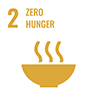
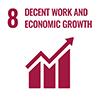
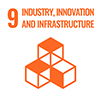
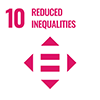
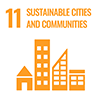
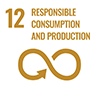
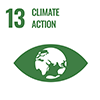
Related journals
This journal is part of our Business, management & strategy collection. Explore our Business, management & strategy subject area to find out more.
Management Research: The Journal of the Iberoamerican Academy of Management
Management Research: Journal of the Iberoamerican Academy of Management publishes high-quality research in the field of...
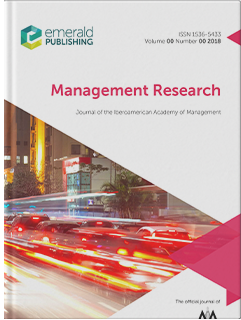
Management Research Review
Management Research Review (MRR) publishes high-quality quantitative and qualitative research in the field of general...
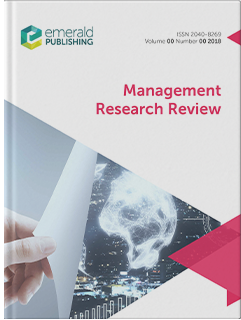
Baltic Journal of Management
Baltic Journal of Management (BJM) publishes multidisciplinary perspectives on contemporary issues and opportunities in...
